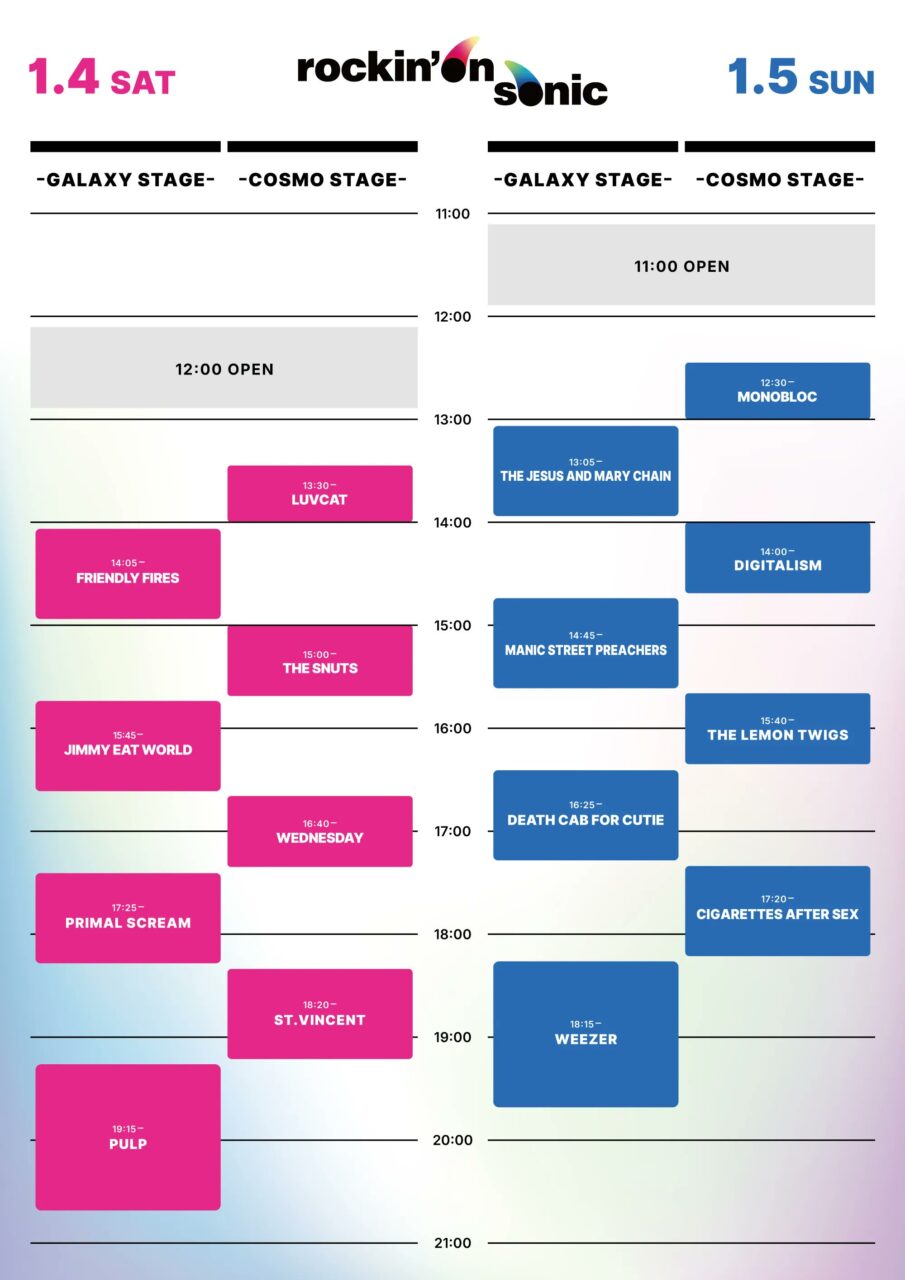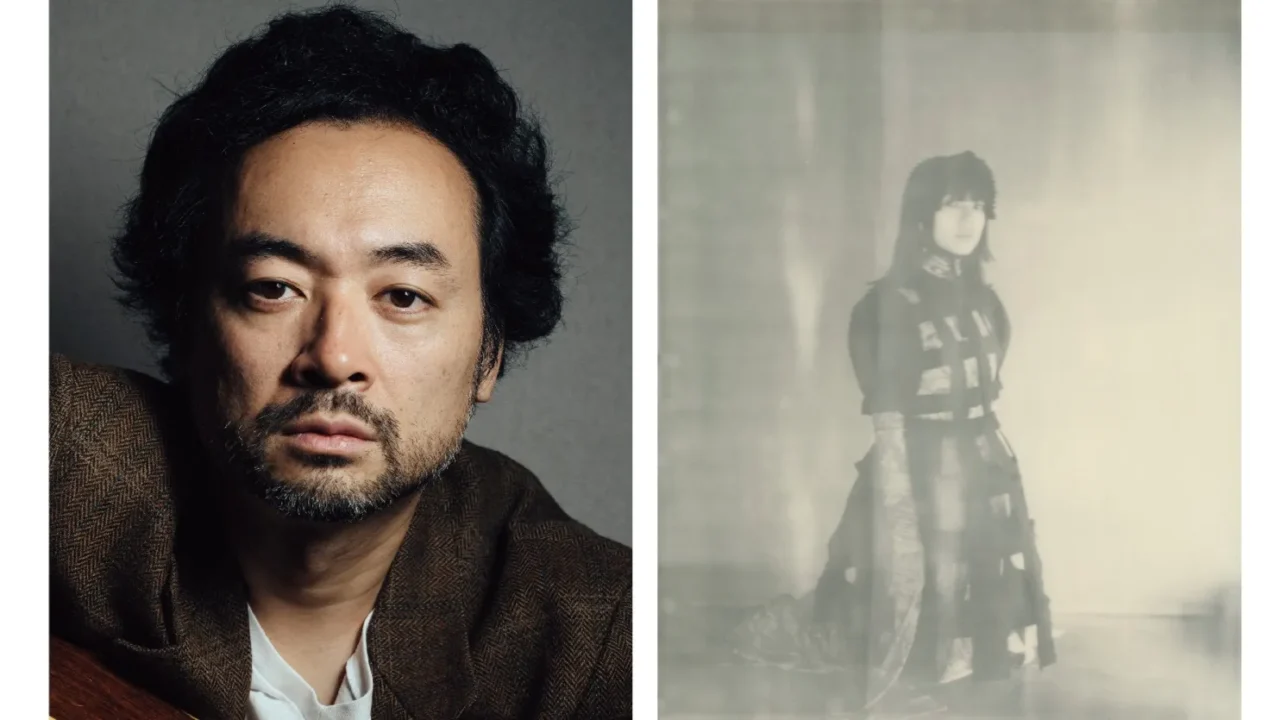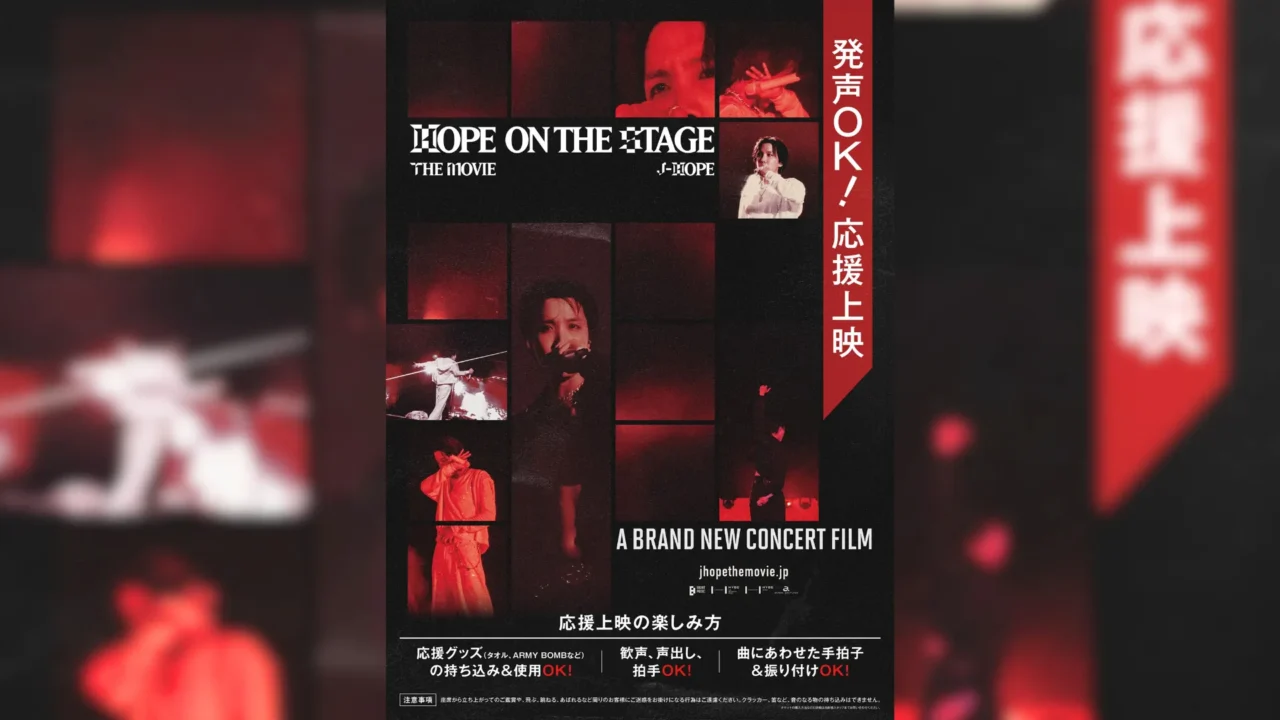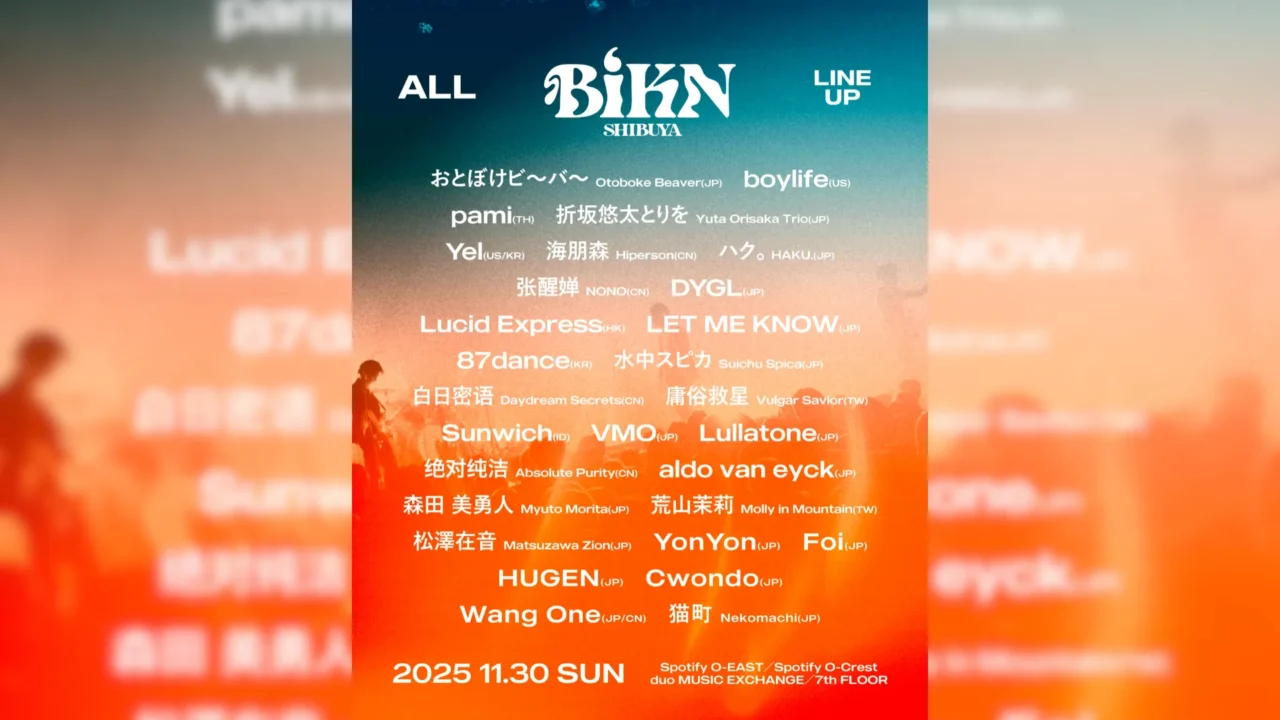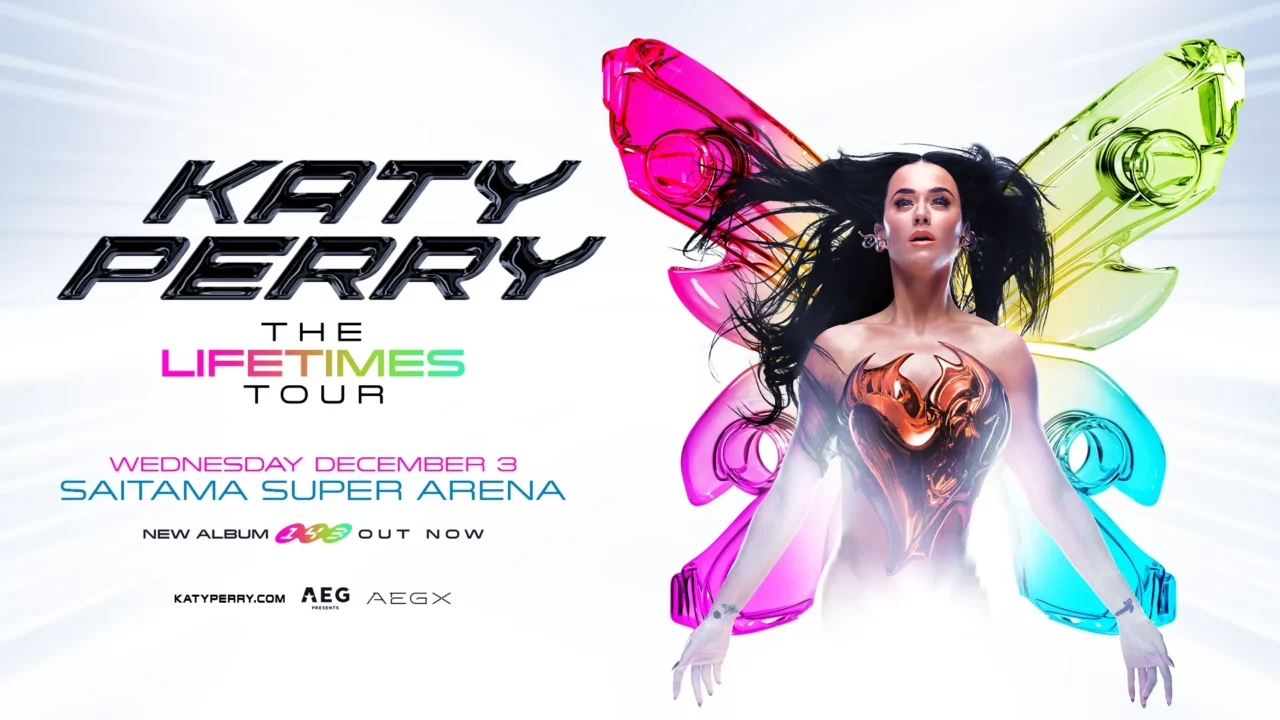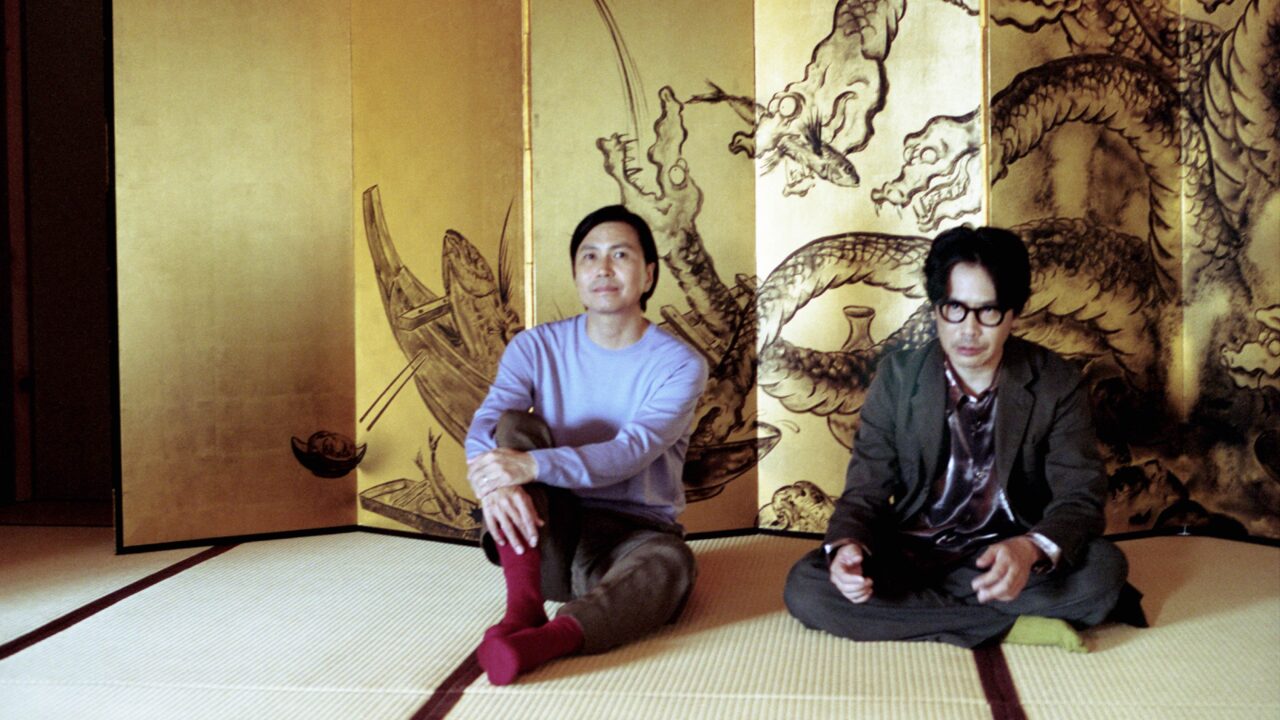“Welcome to the festival made just for you.” This is the vision of Yoichiro Yamazaki, the driving force behind rockin’on sonic, a bold new festival co-created by rockin’on and Summer Sonic, that celebrates nothing but pure Western rock music.
Set for January 4th and 5th, 2024, at the Chiba Makuhari Messe International Exhibition Hall, rockin’on sonic will bring together an electrifying lineup of legends and emerging talent, including PULP, Weezer, Primal Scream, and Death Cab for Cutie, along with a diverse range of artists like the up-and-coming WEDNESDAY and the iconic Saint Vincent. With 16 acts performing across two days and no overlapping set times, the festival promises a deep dive into the current and future sounds of Western rock.
In a time when Western music is said to be in decline, this festival serves as both a nostalgic celebration and a powerful reminder of rock’s timeless influence — a genre that evolves, blends, and reinvents itself across generations. With years of experience curating music magazines and witnessing the ever-changing music scene, Yamazaki opens up about his vision for the festival and what it means for rock music today.
INDEX
Launching a Festival with a Bold Mindset During Challenging Times
When I saw the lineup, I thought, “Is this festival actually made for me?” It really hits all the right notes [laughs]. I’ve been hearing a lot of people in their 30s to 50s, big Western music fans, say things like, “This is exactly the kind of festival we’ve been waiting for!”
Yamazaki: I appreciate that. I’ve been going around telling everyone I meet, “This festival is for you” [laughs].

Born in Tokyo in 1962 and raised in Kobe. Editor and writer. He joined the publishing company rockin’on in 1986. From 1991, he became the editor-in-chief of ROCKIN’ON JAPAN, and from 2000, the editor-in-chief of rockin’on. He currently serves as the overall editor-in-chief for both magazines. He has conducted interviews with numerous artists and written liner notes, earning passionate support from a wide readership.
Can you tell us about the background of launching rockin’on sonic, also known as Rokisoni, and the thoughts behind the theme of a Western rock festival?
Yamazaki:It’s been a long time since we’ve been hearing about the “decline of Western music,” and I personally feel that every day. As the editor-in-chief of a music magazine for many years, I’ve witnessed the steady decline in the number of people listening to Western music, and the diminishing passion for it. Especially, it’s clear that younger generations have fewer opportunities to be exposed to Western music.
However, at the same time, I also feel that the way younger generations approach Western music has been changing in recent years. With the rise of subscription services and the influence of Japanese artists, more people are engaging with Western music in ways that are different from before. Still, it’s not that we’re doing this festival just because the decline of Western music is improving. The situation is still tough, but we have to do it. rockin’on sonic was launched with what you could call a sense of “defiance,” or maybe a sense of “giving up,” in that regard.
rockin’on sonic is being co-hosted with Creativeman, the organizer of SUMMER SONIC. Can you share how that collaboration came about?
Yamazaki:I’ve had a long relationship with Creative Man through Western music, so when it came time to create a Western music event, they were the first ones I thought of. Especially with Western music, how to establish connections with international artists and their management is incredibly important. While ROCK IN JAPAN and COUNTDOWN JAPAN have been long-running festivals organized by rockin’on we’ve never had experience with a Western music festival. So, we absolutely needed Creativeman’s expertise.
Personally, I’ve been attending FUJI ROCK FESTIVAL and SUMMER SONIC every year since their first editions. The appeal of Fuji Rock lies in the enchanting, mountain-based atmosphere. On the other hand, Summer Sonic has the functional and efficient qualities unique to a city-based festival. Plus, with its two-location format in the Kanto and Kansai regions, it makes it accessible for more people. Personally, I’ve always felt that those aspects embody the “rock spirit.” While Fuji Rock’s romantic vibe is incredible, the practicality of Summer Sonic has its own unique charm, and I was excited about the potential of collaborating with Creativeman, considering all these elements.

Looking at the lineup, it reminds me of the SONIC STAGE and MOUNTAIN STAGE at SUMMER SONIC around 2010. While it’s not on the stadium scale, there’s a similar vibe of gathering artists who are supported by core fans. I feel that same energy in this year’s rockin’on sonic lineup.
*SONIC STAGE was a medium-sized stage inside Makuhari Messe, while MOUNTAIN STAGE was the largest stage within the venue. The MARINE STAGE at the outdoor ZOZO Marine Stadium was the biggest stage.
Yamazaki: I definitely had that image in mind as well. Of course, if we could bring in big-name artists, that would be great, but considering the current state of Western music, it’s not realistic to draw tens of thousands of people. So, the goal should be to create a mid-scale festival that can work well. Naturally, that brought to mind the SONIC STAGE from SUMMER SONIC. There’s a different vibe between the audience at the main stage and those at the second and third stages. The main stage has a festival-like atmosphere where everyone can enjoy it, but the SONIC STAGE and MOUNTAIN STAGE feel like special spaces where only the true fans of the bands gather. This time, with rockin’on sonic, I wanted to create that intimate sense of gathering, and I feel like we’ve achieved that.
How did you decide on the artist lineup?
Yamazaki: First, I created a list and showed it to Naoki Shimizu from Creativeman. Weezer and Primal Scream were at the top of that list. I had also included The Libertines and The Smashing Pumpkins, but due to scheduling conflicts, we couldn’t make it happen. However, many of the artists I initially listed have joined the lineup, which is great.

One of the most striking choices was making PULP the headliner, which shows a strong personal attachment from rockin’on.
Yamazaki: To be honest, PULP wasn’t even on the initial list. It wasn’t that I deliberately left them out, it’s just that I hadn’t thought of them at first. During the Britpop era in the UK, Oasis, Blur, and PULP were the three major bands, but in Japan, attention was inevitably focused more on Oasis and Blur. Oasis and Blur have visited Japan many times and performed on big stages, but PULP had very few opportunities to come here, and most people never had a chance to experience their appeal. It’s partly rockin’on‘s fault, I guess [laughs], as we pushed Oasis and Blur so much that the attention on PULP was minimal. Most people in Japan probably haven’t seen their live performances. This time, I think it’s a rare opportunity to see one of the most important bands in UK rock history live.
INDEX
A Rapid Fusion of Generational Music Influences
The festival seems to encompass all the different entry points to Western music across generations. As someone in my 50s, I feel a sense of nostalgia from the lineup, but it’s also exciting to see artists from “today.” Meanwhile, people in their 40s, who grew up enjoying Japanese rock bands like ASIAN KUNG-FU GENERATION and [Alexandros] before being introduced to Western music, might have a different sense of connection.
Yamazaki: In addition, there are bands like Jimmy Eat World and Death Cab for Cutie. I believe these bands played a significant role in influencing Japanese rock bands like Straightener and ELLEGARDEN within a different context.
(Editor) I’m 27, and for me, my gateway to Western music was through small communities and bands, such as learning about Weezer through Helsinki Lambda Club or discovering The Lemon Twigs from a band I encountered at a live house in Shimokitazawa. These smaller connections were my introduction to Western music.
Yamazaki: That’s a wonderful entry point as well. I’d be happy if people who started their journey into Western music from similar small encounters come to this festival. The reason we chose to hold the festival at this particular time, as I mentioned earlier, is because I feel that the way music is consumed has been changing drastically over the past few years. Since the emergence of Gen Z, it seems like the music preferences that were once divided by generation have started to blend together.
What exactly do you mean by that?
Yamazaki:In the past, older generations had few opportunities to see younger artists, and conversely, younger generations didn’t often get to experience the legends. But now, thanks to streaming services, people of all generations can easily listen to music. This has created a significant change.
Before streaming, people had to buy or borrow albums, which often meant staying within the music of their own generation. But now, older generations are more interested in younger artists, and younger generations have far more opportunities to experience the legends. With the removal of these generational barriers and the rapid blending of music, I felt it was crucial to hold this festival at this moment.
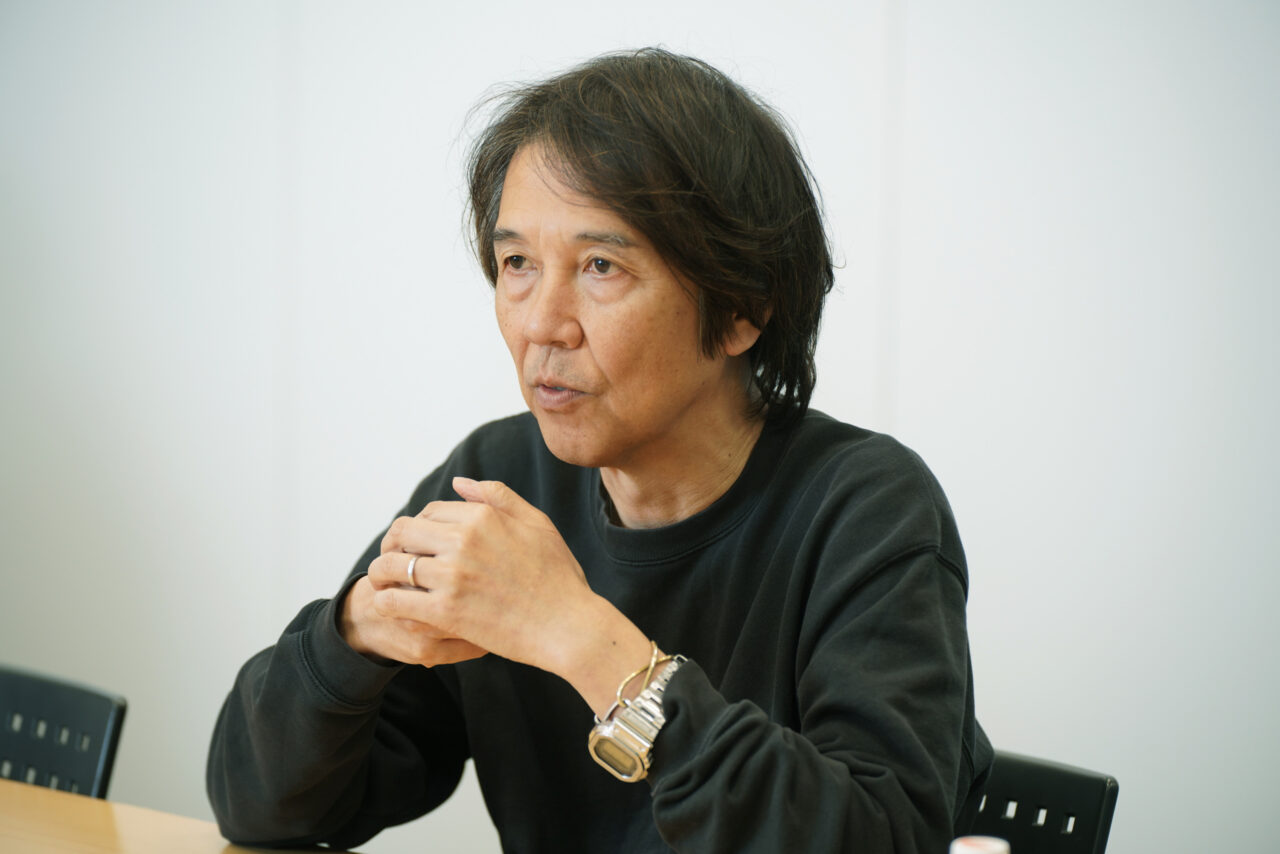
Certainly, the spread of the internet and social media, especially with the advent of streaming services, has really expanded the music world.
Yamazaki: And I think the pandemic further accelerated this change. Before, the music scene was built around live performances. I mostly went to live shows of artists from my generation, but going to live houses or concert venues was time-consuming, and attending frequently was difficult.
However, with the pandemic, live shows became almost impossible, and listening to recorded music was all we could do. With platforms like YouTube offering music videos and live footage, there was suddenly greater access to music from other generations, and it seems like the excitement just exploded.
Also, I feel like the younger generation is much more accepting of reformed bands these days. In the past, when bands like the Sex Pistols or the Pixies reformed, they were often met with cold reactions, like “They’re just in it for the money.” It feels like we rarely hear that kind of criticism anymore.
Yamazaki: You’re right. In the past, when we thought of rock bands, there was always a narrative: a band forms, they have their struggles, some bands win, others lose, and eventually, they break up. That was the “story of a rock band.” But then, the idea of “reunion” emerged as a new form, and it became accepted as part of the story. For younger generations, I think reunions are seen as just another chapter in the band’s story, almost naturally.
I see. That’s really interesting.
Yamazaki: Our generation used to have a certain resistance or reluctance towards reunions. But now, as the generational divide has lessened, it’s become a big change that younger generations have an unconditional respect for the legends.
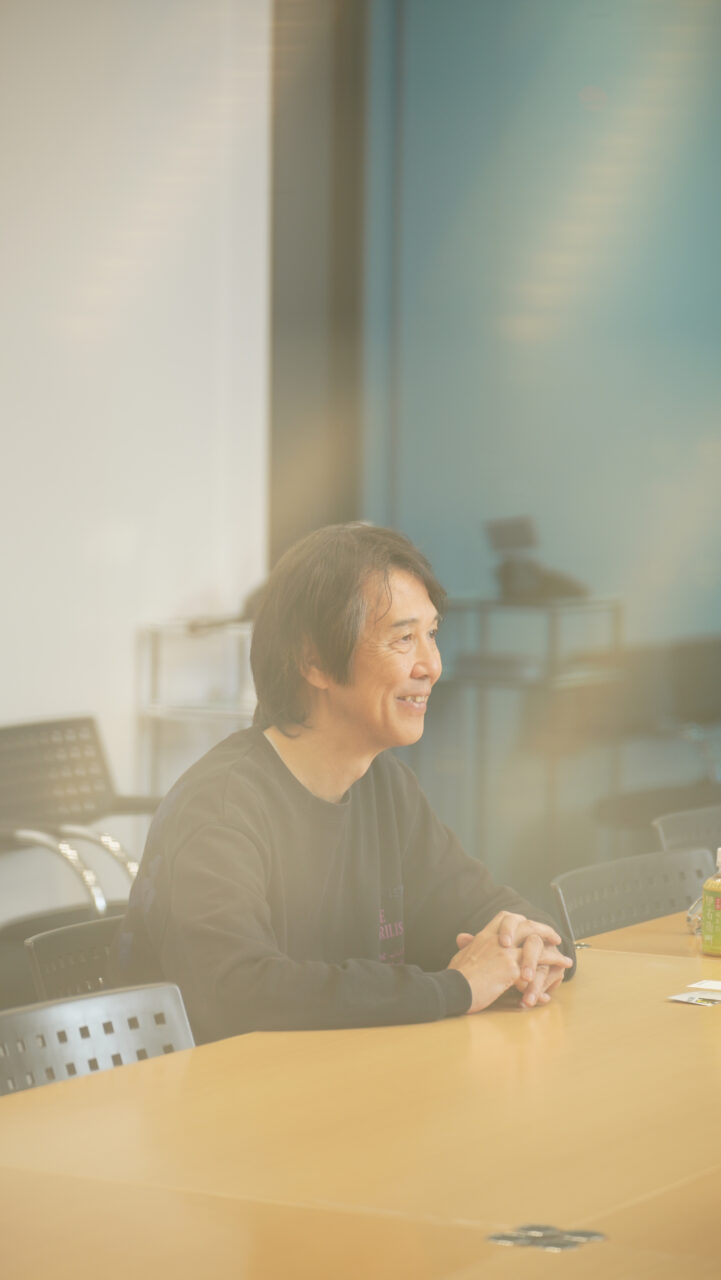
I feel that the journalistic perspective and context of rockin’on are reflected in this lineup as well.
Yamazaki: This was something I was very conscious of. I believe that rock continues to evolve, but it is also something that is passed down through the generations. In other words, it’s about honoring tradition while always becoming something new. I wanted to shape this “vertical flow” as a festival.
For example, in our magazine, we might feature an interview with The Rolling Stones alongside one with The Lemon Twigs, who are in their 20s. By having artists from different eras and generations discussed side by side, you get a more diverse and interesting perspective. I applied the same idea when putting together this festival’s lineup.
